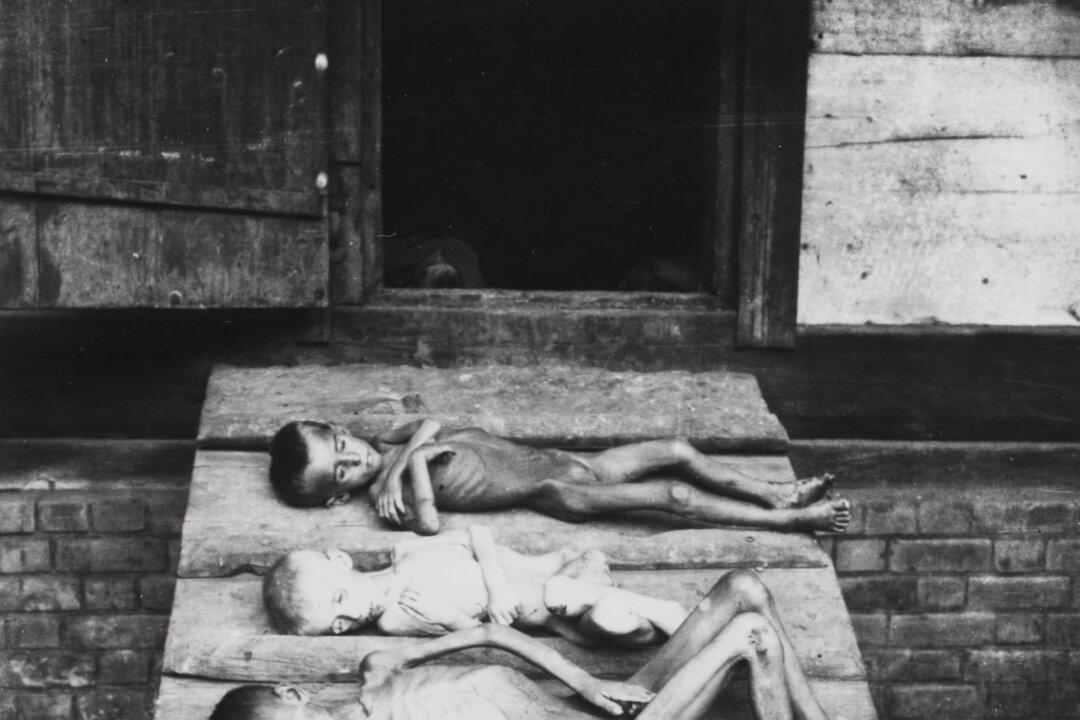Despite the untold horrors and cruelties of communist movements, it seems that some of our social institutions still don’t get it. As I write this article, an exhibition is showing at the Royal Academy in London. It is a blockbuster exhibition called Revolution: Russian Art, a full-on showcase of communist artwork starting from the Bolshevik revolution in 1917, proceeding through Lenin’s civil war, and ending in 1932. That was the year Stalin began systematically starving to death 30 million of his own people.
The museum states that it takes inspiration from a “remarkable exhibition shown in Russia just before Stalin’s clampdown.” In its own words, it aims to present the “momentous periods in modern world history through the lens of its groundbreaking art.” All told, communism killed well over 100 million of its own people in the last century. With respect to all this, I have no choice but to ask, why are we allowing this art exhibition into our museums and galleries?
If it were an exhibition of Nazi artwork, it would never have been allowed. To display portraits of Hitler and paintings filled with swastikas, a public outcry like you wouldn’t believe would have followed. Hitler and his Nazi followers killed 11 million men, women, and children. Killed in gas chambers. Killed at Auschwitz. That was the Holocaust, for goodness’ sake! To this day, images such as the swastika, the Nazi salute, and the Führer—mustache, slicked hair, and all—all of these we now associate with “evil” in its purest form.
But, with communism … not so much.
On the contrary, some people feel a sense of just cause or sympathy toward the communist movement. In universities, for example, it is not all that uncommon for professors to openly declare themselves Marxists. In terms of popular culture, some young people find it fashionable to sport T-shirts and handbags with pictures of Mao Zedong emblazoned on it. There was even a popular music movement in the 1980s called “Red Wedge,” named after a propaganda painting—one of the paintings in this exhibition—which was a call for savage bloodshed against enemies of the revolution.
So, let’s just take a step back and look at some of the facts: Communism killed between 100 to 150 million of its own people, more than the total number killed in all the wars throughout history combined. These deaths occurred, not during wartime but during peacetime. Mao alone killed 45 million of his own people. He is now considered the worst mass murderer in the history of the world. Compared to Mao, Hitler pales in comparison. Yet, we still see Mao’s face on T-shirts.
Might I ask, what would happen if a university professor openly declared himself a Nazi? He might be fired and shunned by his peers and students. What would happen if you or I wore a T-shirt with a swastika emblazoned on it? How about a picture of Hitler? Obviously, we would be reproached (perhaps harshly), and there would be social repercussions. And, if I may add—rightfully so.
Some say the revolution started out as a good thing, with the noblest of aspirations, but later, something went horribly wrong. One of the attendees of the show shared her view that “the real repression didn’t start until 1932.”
Really? It seems some people are unaware of the mass starvation caused by Lenin’s policy of “war communism.” His army took grain from the peasants and hauled the men away from their fields in order to sustain his revolution. Millions upon millions starved to death as a result. Husbands and wives cannibalized their own children. And the damage went well beyond loss of life; we cannot begin to comprehend the mass psychological impact this would have had on the society. If this repression was not “the real repression,” I wonder what her definition of “real” is.
Killing began right from the start of the revolution, and is central to its mission: There were secret police, and there were gulags. Lenin wanted class genocide—to eliminate an entire class of society. He thought the whole bourgeoisie class should be sent to the gulags and worked to death.
Even supposing there was a proper venue for this “art,” placing it in its proper context would be all-important. It needs to be made clear that this catastrophe caused untold suffering, and millions perished. To sell it with a blockbuster name like “Revolution,” and hawk it like some commodity, seems grossly inappropriate.
Aesthetically speaking, the exhibition makes use of red walls, revolutionary-themed wallpaper, and so forth to match the aesthetic—it does little justice to the truth. Art critic Jonathan Jones (The Guardian) offered some additional thoughts: “If the Royal Academy wanted to be honest, they might have called it something more like ‘Black Square: The Russian Tragedy 1917–1932.’ The way we glibly admire Russian art from the age of Lenin sentimentalizes one of the most murderous chapters in human history.”
So, to answer the question of why communism and communist art is so acceptable in our society, why not take this whole exhibition as an opportunity for self-examination? Sir Antony Beever, a military historian, shared some of his views rather candidly, People seem to think that somehow class genocide can’t be as bad as racial genocide.”
Well, I too have my thoughts on the matter. To put it plainly, for over a century, Western society has been profoundly affected by communism, and the influence it’s had on our perceptions go deeper than we may realize. There is a certain groundwork that Marxists try to lay in non-communist countries, a sort of preparation for revolution as it were. Whether it be intellectuals, KGB agents, sleepers—they come over, join our academia, and become upstanding citizens. They do not break any laws, but their goal is in fact to lay this groundwork for communism. Through various social channels, they promote a sort of counterculture within our institutions that both weaken and destabilize the culture.
The Frankfurt School, for example, was a group of Marxist intellectuals that emigrated to New York, and implanted itself into Columbia University in New York just after World War I. They practiced a variety of Marxism not based on violent revolution, but on the idea of “a long march through the institutions” (based on the Marxist theories of Antonio Gramsci) ---subverting the culture from within. Many from this school went on to take up prominent positions in American universities, promoting extreme leftist ideas throughout academia. The impact of this was far-reaching, and has extended to the present day.
Herbert Marcuse of the Frankfurt school for example, a Marxist, was instrumental in organizing militant student protests during the counterculture years of the 1960s, and is now regarded as the “father of the New Left” in the United States. In his book, ‘Counterrevolution and Revolt’, he elaborated on the idea of subversion from within:
“[W]orking against the established institutions while working within them, but not simply by ‘boring from within’, rather by ‘doing the job’, learning … how to program and read computers, how to teach at all levels of education, how to use the mass media, how to organize production…”
Russian defector and former KGB operative, Yuri Bezminov explained very clearly that the KGB’s goal was “to subvert anything of value in the country of your enemy until such time when the perception of reality of your enemy is screwed up to such an extent that he does not perceive you as an enemy; and that your system, your civilization, and your ambitions look to your enemy as an alternative.”
This is exactly what has been happening in our culture. Evil is no longer evil. Good is no longer good. We have Marxist professors teaching in our universities. We have pictures of Mao on our T-shirts. And we have communist art in our museums. This is taking us in a direction we don’t want to go, and we need to wake up before it’s too late. Is it any surprise that along with the exhibition, the museum is encouraging participation as a family event? In an online workshop demonstration “how to: paint a protest poster” that is “suitable for children aged 5+,” participants are meant to take inspiration from Soviet protest posters.
We have a responsibility to stand up and speak out against exhibitions like this, for we would do no less if confronted by a show of Nazi art. Such events affect our community, and that’s something we need to protect. We need to speak out, have discussions, and write letters. At the very least, we should vote with our dollars by not going to see such an appalling display.






